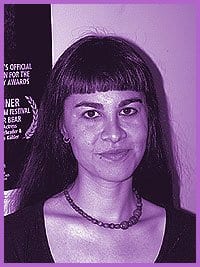Similar to the designation of February as Black History Month, the idea for Gay & Lesbian History Month in October was proposed in the early ’90s as a way to increase appreciation of our history. Although recognized internationally, it conflicts in Canada with Women’s History Month, which also takes place in October.
The very existence of Gay & Lesbian History Month – or Queer History Month as it’s often called for reasons of inclusiveness – is controversial, and the month often goes unrecognized by major institutions.
In addition to spending the month reading books on queer history, one way to celebrate the month is by spreading the word. Contact colleagues, family and friends and inform them that October is about your history. Make certain that your local library and bookstore are aware that October is Queer History Month, and request that they order books on queer history and make a display of them. Taking advocacy further, approach the media to run features on lesbian and gay history, ask universities to organize lectures and contact your councillor and request that city council proclaim October as Queer History Month.
I thought I would do my part for Queer History Month by bringing to life two women I mentioned in a previous column, the Ladies Of Llangollen.
The Ladies Of Llangollen were Lady Eleanor Butler and the Honourable Sarah Ponsonby, two women who came from old Irish landed aristocracy. Eleanor Butler (1739-1829) lived with her family in Kilkenny Castle in Ireland. She was educated in a convent in France. Sixteen years her junior, Sarah Ponsonby (1755-1831) lived with relatives in Woodstock, Ireland.
The women met in 1768, and their romantic friendship began immediately, as did their plan to live together in an idyllic rural setting. After her repeated refusal to marry, Eleanor Butler was confined for a time by her family to separate her from Sarah Ponsonby. Rather than being forced into unwanted marriages, they eloped together in April 1778. Their families went after them and tried to make them give up their plans.
Eleanor and Sarah ignored their families’ pleas. Disguised in men’s clothing, they eloped together a second time and escaped across the Irish Sea forever. The two women set up a home in Plas Newydd, or New Place, near the town of Llangollen in North Wales in 1780, and lived there together for the rest of their lives – a period of almost 50 years. With a modest income from their relatives, they overhauled Plas Newydd to the Gothic style with draperies, wooden arches and glass windows.
The Ladies, as they came to be known by locals, devoted their time to studying literature and languages, improving Plas Newydd and corresponding with an affluent circle of friends. Over the years, they created an opulent garden that attracted many people. The house and gardens became a haven for a number of visitors, including the poets Robert Southey, Words-worth, Shelley, Byron and Sir Walter Scott, as well as the Duke of Wellington. The story of their friendship spread, and they became celebrated throughout Britain. Queen Charlotte wanted to see their cottage, and persuaded her husband, King George III, to grant them a pension. With this approval from the monarchy, they finally gained their families’ acceptance.
The article, Extraordinary Female Affection, published in the General Evening Post on Jul 24, 1783, is among those that claimed the Ladies were lesbian. It explains the story of their elopement and closes with these lines:
“Miss Butler is tall and masculine, she wears always a riding habit, hangs her hat with the air of a sportsman in the hall, and appears in all respects as a young man if we except the petticoats which she still retains.
“Miss Ponsonby, on the contrary, is polite and effeminate, fair and beautiful. They live in elegance, neatness and taste. Two females are their only servants.
“Miss Ponsonby does the duties and honours of the house, while Miss Butler superintends the gardens and the rest of the grounds.”
Eleanor Butler died in 1829, and Sarah Ponsonby followed her two years later. They left behind volumes of letters and diaries that narrate the events of their rural life in Llangollen. The diaries are a wonderful record of a happy lesbian marriage. In her journals, Eleanor only refers to Sarah as “My beloved.”
Set in peaceful gardens surrounded by trees, Plas Newydd still retains the Gothic features that the Ladies introduced. The house is now a museum run by Denbighshire County Council, and is open from April through October.
This is only one story, among many, that makes up the rich legacy that is our queer history. There are hundreds more that await being explored during Queer History Month and throughout the rest of the year.

 Why you can trust Xtra
Why you can trust Xtra


